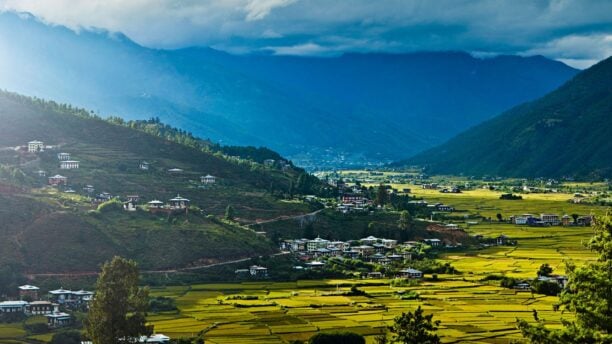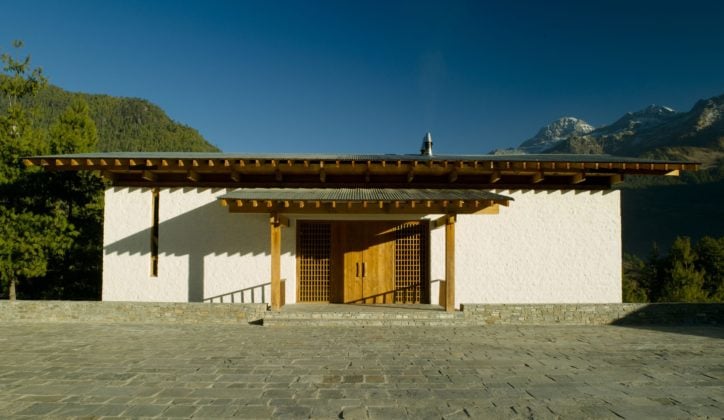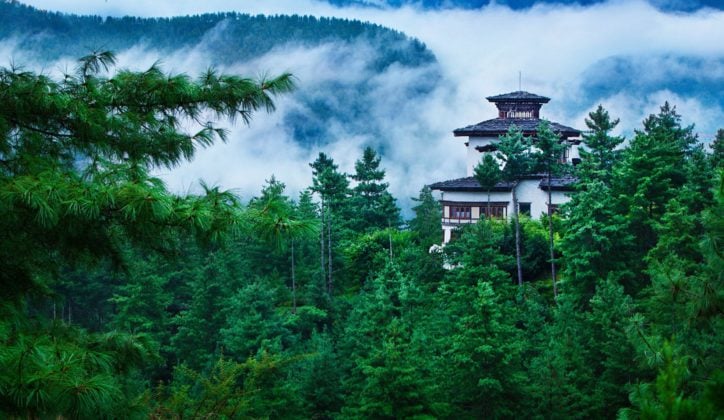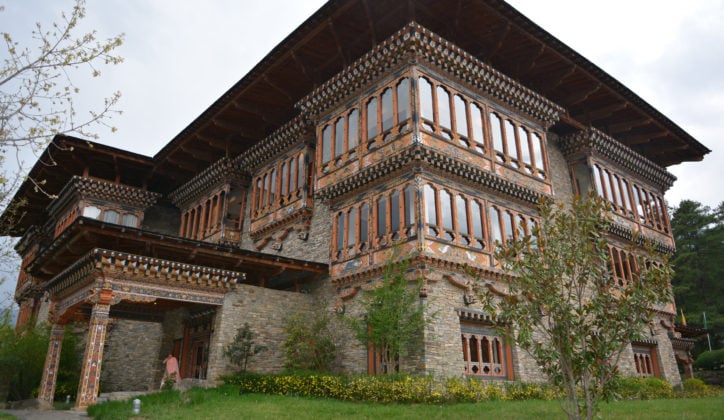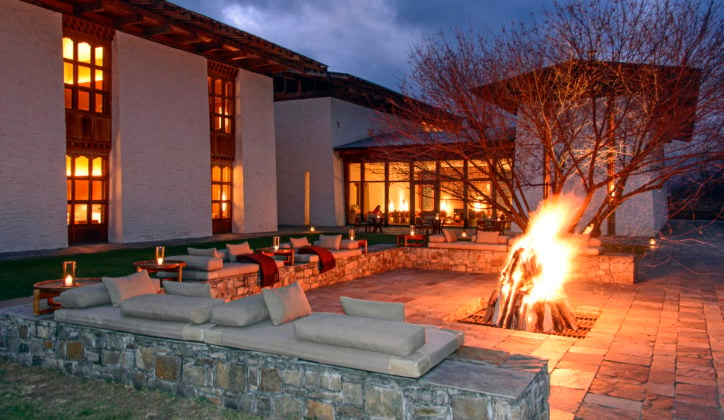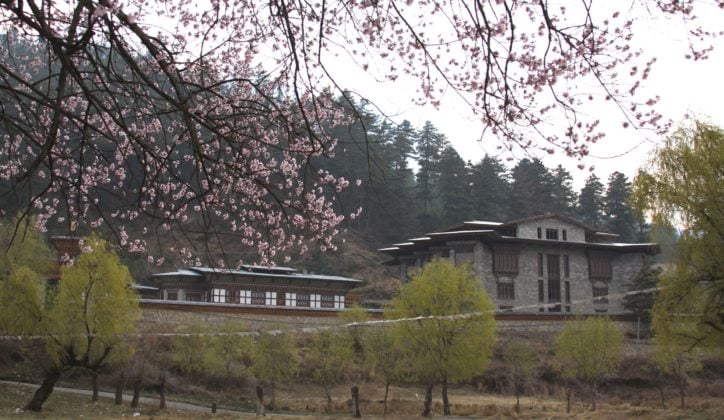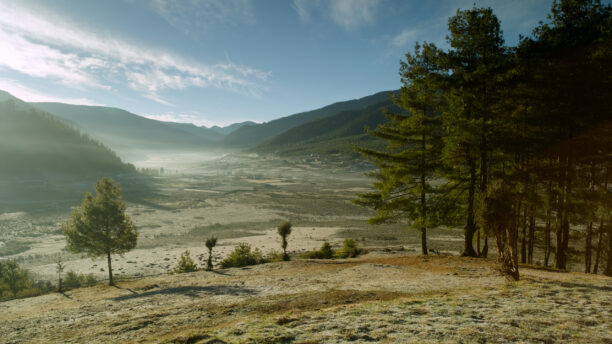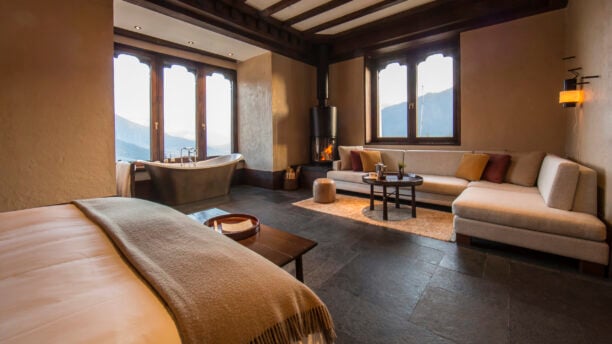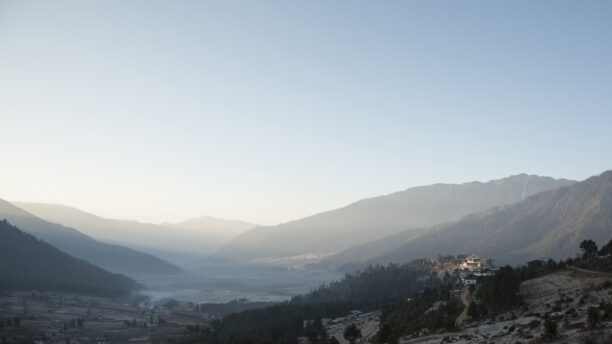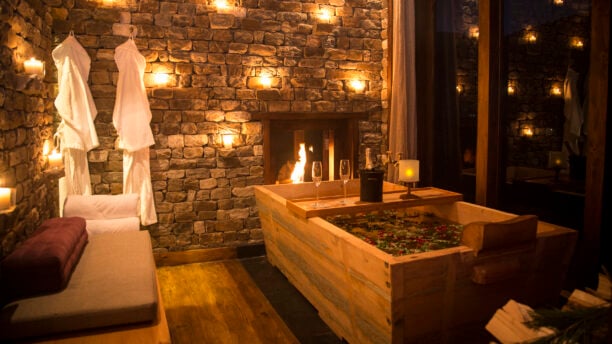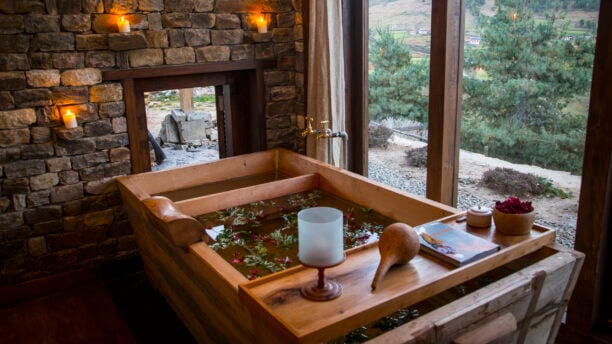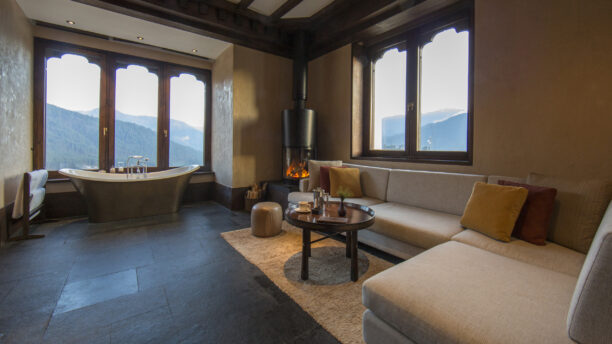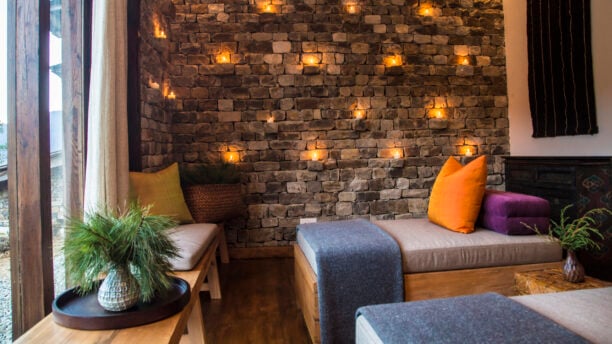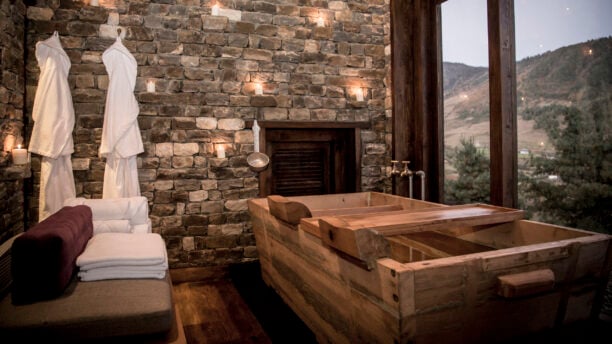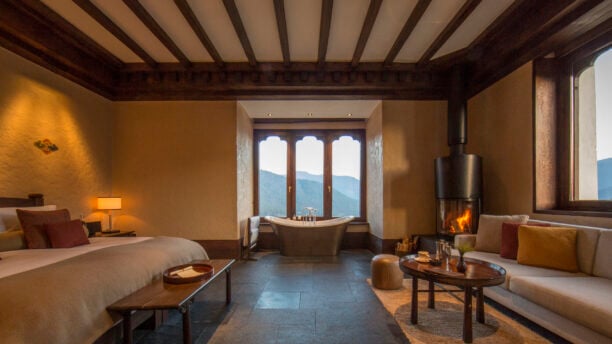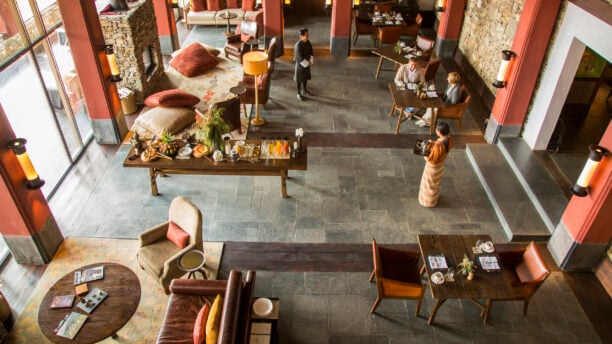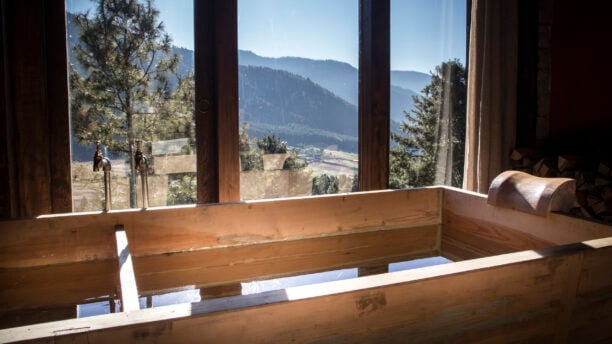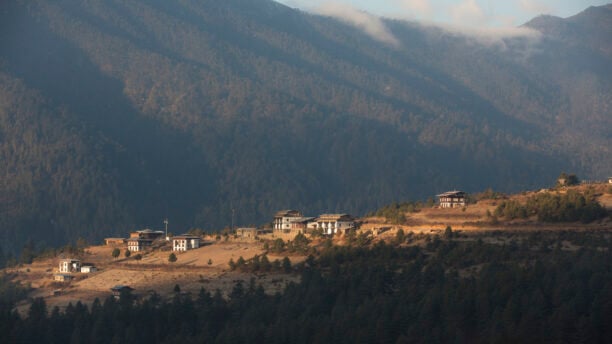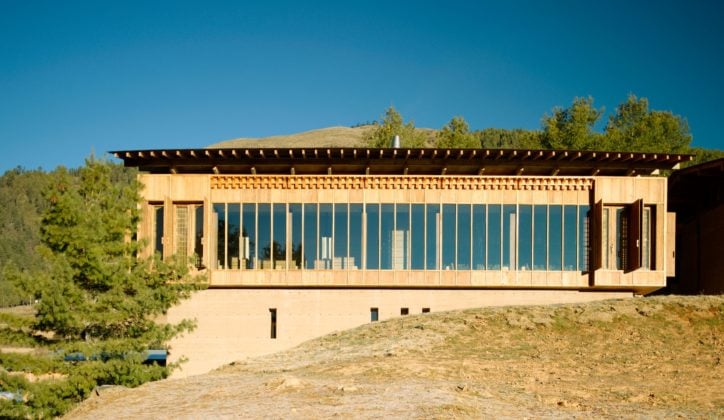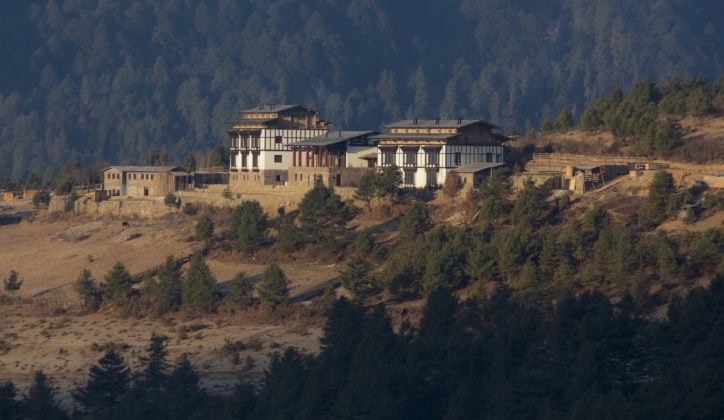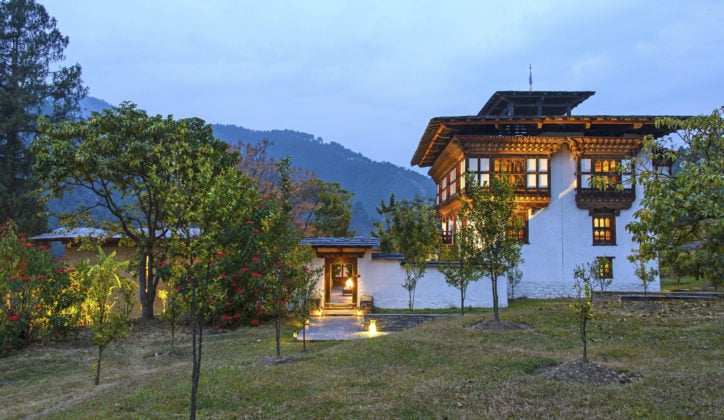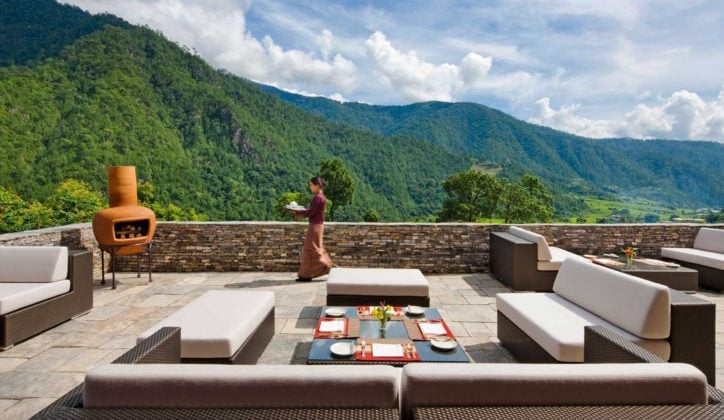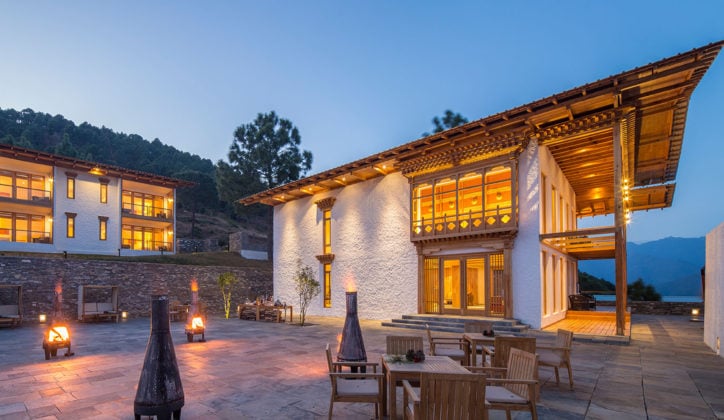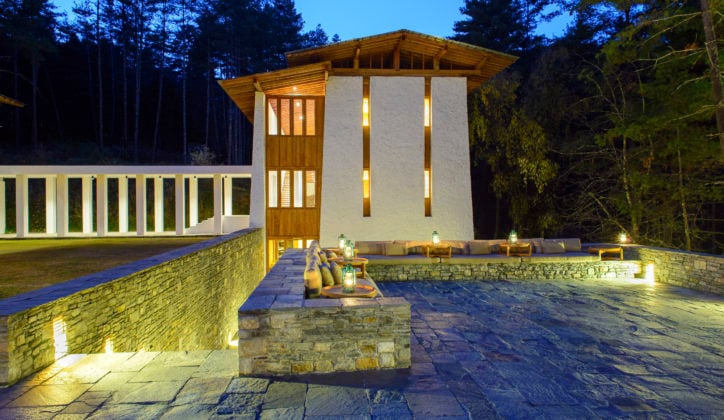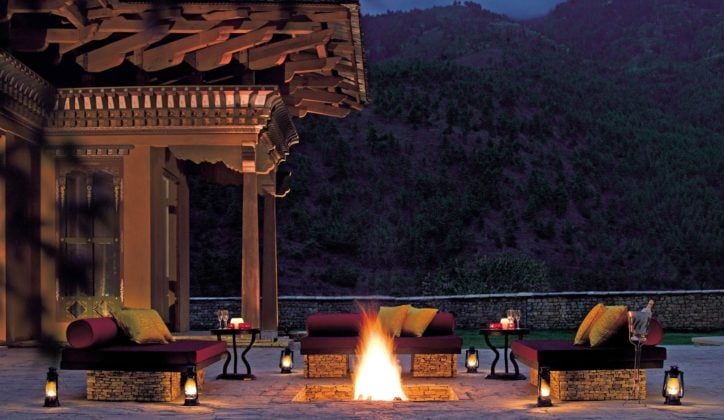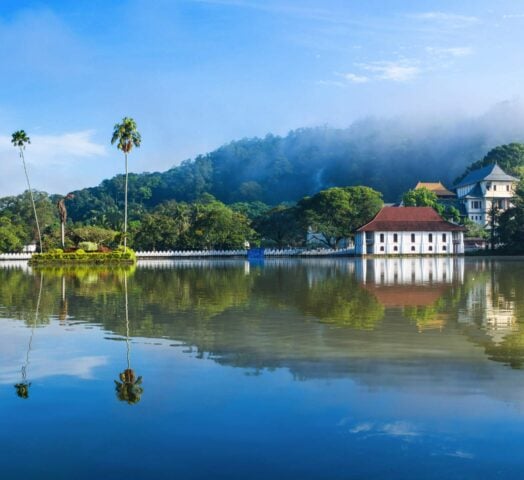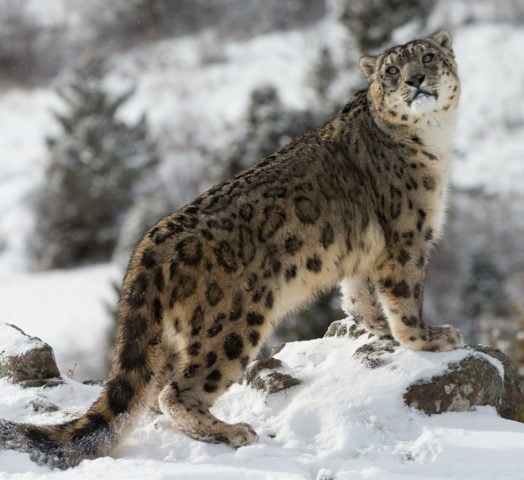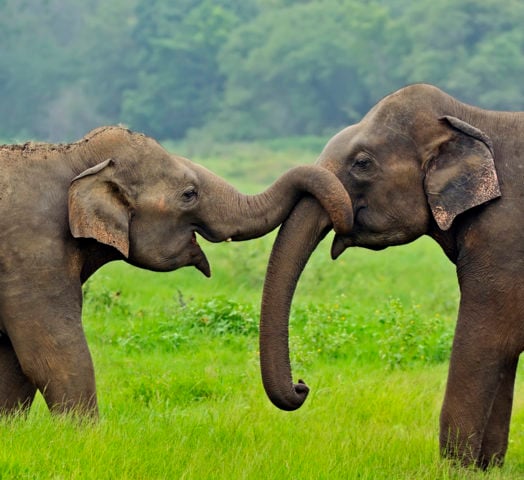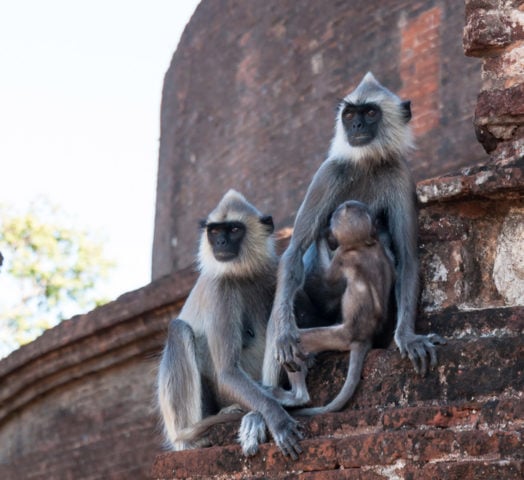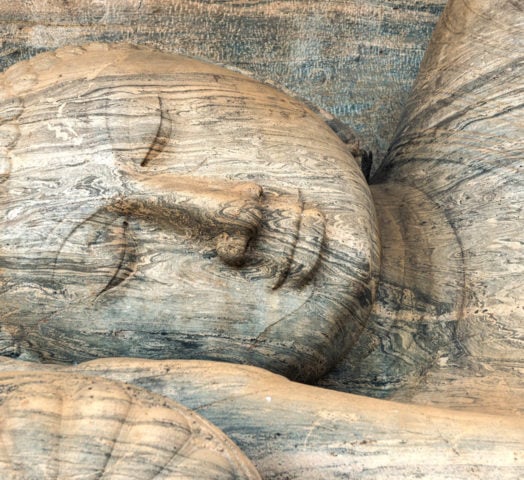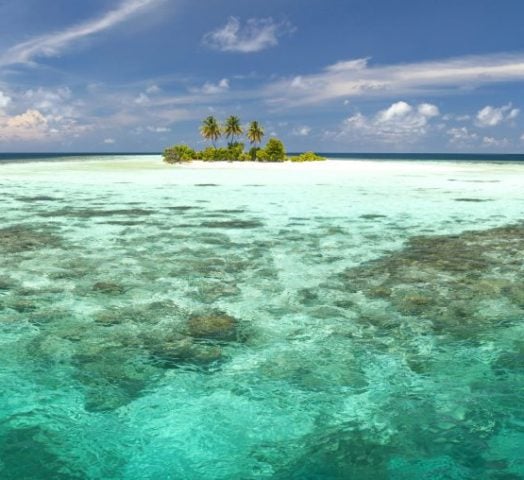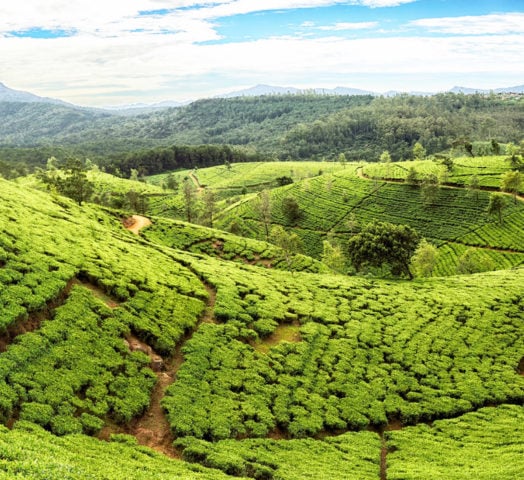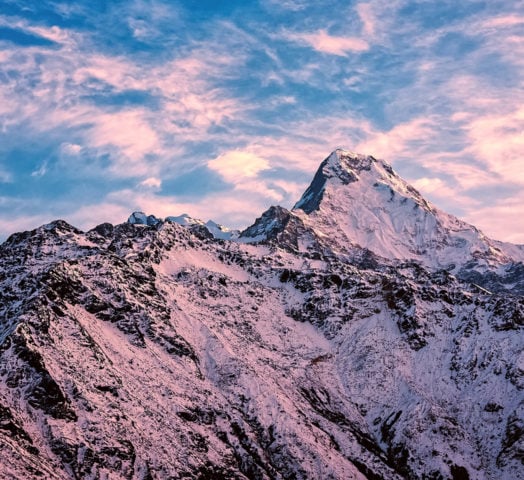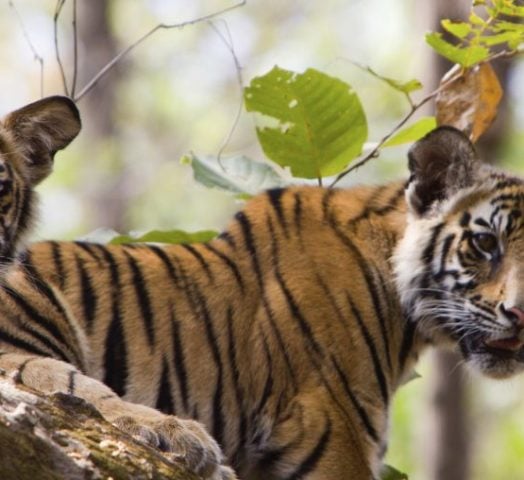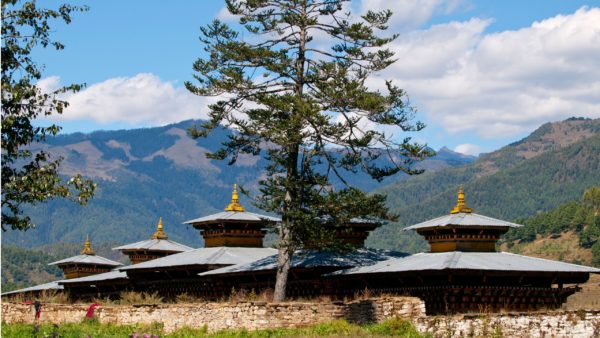An insight into the ancient living culture of Bhutan with an intrepid festival tour
Personalised journeys from start to finish
Every trip helps support Conservation
Every detail taken care of
What's included
-
This tour is date dependant and takes place over October and November
-
Exclusive, tailored tours including a hike to Tiger's Nest
-
Private tour options in Paro, Bumthang, Punakha, Thimphu and Gangtey
-
Luxury accommodation throughout with all meals included
-
Meet and greet service
-
Full support from your Travel Concierge before, during and after your trip
At a glance
Experience the ancient living culture of Bhutan with this intrepid festival tour, and we’re certain that you’ll fall in love with the beauty, culture and people of the Land of the Thunder Dragon.
We begin and end this tour in Paro, where we discover the town’s architectural charms with impressive fortresses, ancient ruins and the awesome ‘Tiger’s Nest’ monastery, perched high on a cliff face. Next up is Bhutan’s spiritual heartland, Bumthang, where we’ll attend the Jambay Lhakhang Festival. Watch athletic masked dances and colorful celebrations and you’ll experience the vitality of the Bhutanese first hand.
We then move on to Gangtey and Punakha where we visit the ‘The Divine Madman Temple’ and have tea at the Wolokha Nunnery. Thimphu, Bhutan‘s capital city, is our next destination. It’s here that we’ll attend the Coronation Day Festival, celebrated with games, singing and performances each year in honour of the 5th King’s coronation.
Expect color, movement, atmosphere and excitement. Complete with luxury accommodation and our signature specialized attention throughout, naturally.
Example trip itinerary
Paro
Transfer
Private transfer to Paro hotel
Accommodation in Paro
Paro
Overview
Situated in Balakha Village, the Amankora Paro contrasts rustic elements with contemporary design. Its pleasing features include natural rammed-earth walls, gently sloping roofs, wood-panelled interiors and spectacular views of blue pine forests, the 17th-century Drukyel Dzong and Mount Jhomolhari.
This impressive lodge features 24 suites, each with a combined lounge and bedroom and traditional wood-burning stove. Centred by a large flagstone courtyard, a lime-washed stone pavilion houses the living and dining room facilities with floor-to-ceiling windows, a library and an outdoor terrace overlooking a small stream.
A spa set on two levels features a yoga studio with glass walls and treatment rooms with outdoor baths.
→ Find out moreParo
Overview
Located on a 38-acre site sitting on a forested mount, Uma Paro was once the home of a Bhutanese nobleman and is a resort of exceptional style and elegance. The building, one of Bhutan’s only boutique hotels, features handcrafted stone, wood and tiles and white walls vividly painted by local artists.
29 suites including private villas can be found amongst glades planted with azaleas, and each suite features a traditional wood-burning stove. The circular dining room offers a unique atmosphere for dinners while a cosy bar and lounge afford complete relaxation.
Spa facilities incorporate a unique hot stone bath house, a large indoor pool with outdoor sun deck and steam rooms. There is also the use of a fitness centre and a boutique to complete your stay.
→ Find out moreParo
Overview
Fusing Bhutanese tradition with the best of modern-day technology, Zhiwa Ling is a forward-thinking hotel faithfully rooted in the past.
Guestrooms blend elaborate hand-carved wooden cornices with Swedish underfloor heating to create a comfortable tribute to Bhutan’s ornate architecture. Some feature sitting and dining rooms and all boast Paro valley views, best enjoyed from your sofa or balcony.
And the amenities don’t stop there. The spa is decked out with a sauna, steam room and traditional outdoor hot stone bath, while two restaurants serve a range of regional and international dishes. The spiritually inclined are particularly well catered for and can experience an authentic Buddhist ceremony at the in-house temple, made from 450 year old timbers from the famous Gangtey Monastery, and practise yoga at the Meditation House.
→ Find out more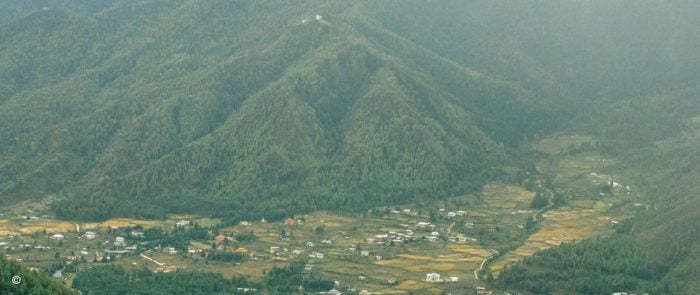
The pretty valley of Paro with its town of the same name is one of the kingdom's widest and is covered in fertile rice fields crisscrossed by a beautiful meandering river. The main street of the town was only built in 1985 but it's lined with cheerfully painted wooden shop fronts and restaurants in a classic Bhutanese style.
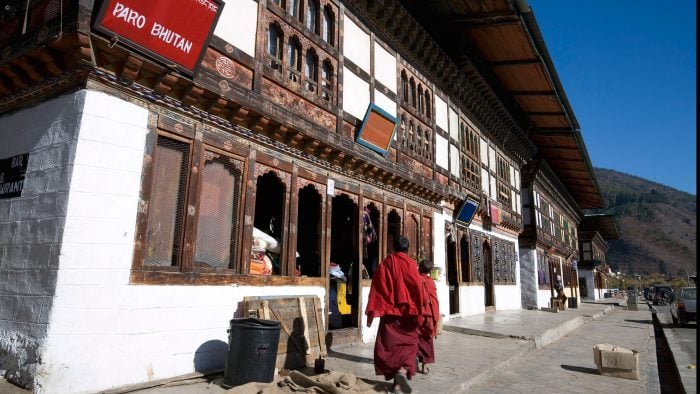
Today you will enjoy a tour of the town of Paro. Your day begins with a short 30 minute drive in a private vehicle to the National Museum, which lends itself to spectacular bird’s eye views of the main Paro Valley. The museum houses over 3000 pieces of Bhutanese art, covering more than 1,500 years of Bhutan's cultural heritage. It has a formidable collection of antiques from Buddhist temples, and artefacts once used by both the nobility and common folk. Highlights include masks, armour, paintings, prehistoric items and natural history exhibits.
A short drive from the museum takes you to the Rinpung Dzong, a large Buddhist monastery and fortress that's regarded as one of Bhutan's most impressive and well-known dzongs - and perhaps the finest example of Bhutanese architecture. From the 17th to the late 19th century, dzongs served as defending fortresses and were built with strong walls, false doors, reservoirs for water and food and hidden armouries. Dzongs were also headquarters for the religious and the political administrations. Once you've seen inside the Rinpung Dzong, enjoy the short walk across a wooden cantilever bridge on the dzong grounds.
If time permits we will take a tour around the ancient ruins of Drugyal Dzong in the upper part of Paro. The name of the dzong means "Victory" and it is a testimony to the valour of Bhutanese fighters against invaders from the north. A walk around the ruins and a visit inside gives an insight into the building techniques of Bhutanese dzongs.
Transfer
Private transfer to Paro Airport
Flight
Flight from Paro to Bumthang
Bumthang
Accommodation in Bumthang
Bumthang
Overview
With a name derived from the Sanskrit word for peace, you can rest assured that your stay at Amankora Bumthang will be full of serenity and comfort. Located within the district’s main town of Jakar, the elegant lodge holds a premier position adjacent to the first and second King of Bhutan’s palace, Wangdichholing.
The lodge has a classical Bhutanese design with a dzong-inspired entrance which opens out into a pleasing lounge featuring a traditional wood burning stove. The 16 suites have been separated out into four structures for maximum privacy and are accessed through an imposing stone hallway. Each room is appointed with wood-panelled interiors, wood burning stoves and a daybed overlooking the courtyard and the nearby palace and monastery, as well as all the usual high-end conveniences.
The attractive courtyard offers a delightful opportunity for dinning outside under the shade of fruit trees and spa facilities can be found near the main entrance hall. Not that you’ll want to spend all your time in your quarters – the lodge is perfectly situated for exploring Jakar and the surrounding Choekhor Valley with the former royal sports ground of Bhutan’s first two kings lying beside the entrance avenue.
→ Find out moreBumthang
Overview
Not only is this mountain resort one of the oldest family-run properties in Bumthang, it is also regarded as one of the best.
Simple and charming with warm, personal service, this is a comfortable base from which to explore the region.
Renovated, pine-clad rooms look out to views of the Wangdichholing Palace and the Drangme Chhu River, while wood-burning stoves, ultra-comfy beds and home-cooked meals provide a welcome retreat after a day’s exploring.
→ Find out more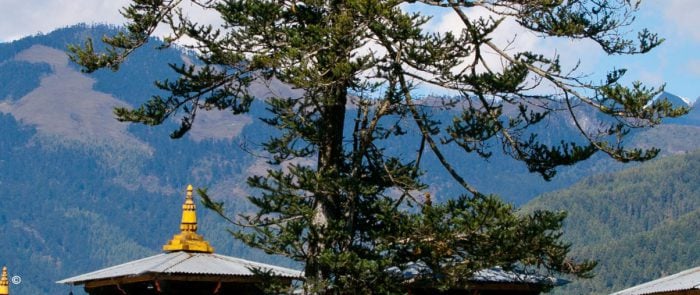
Spend your days in Bhutan's rural and most historic region, Bumthang, exploring the vast number of ancient temples and sacred sites among the farming lands. Comprised of four mountain valleys, Bumthang means 'beautiful land' and is home to quaint farming villages, an intricate and imposing dzong and two national parks where you can see the Bengal tiger, snow leopard and Himalayan black bear.
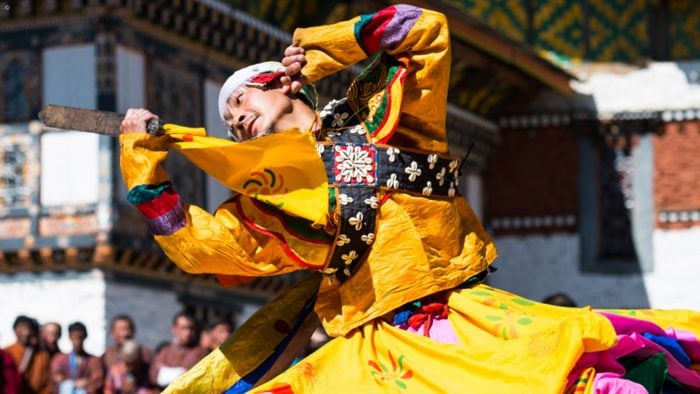
Today, you will be brought to see two of the oldest temples in the kingdom, Jambay Lhakhang and the Kurje Lhakhang. The Jambay Lhakhang temple was built in the 7th century AD by a Tibetan King named Songtsen Gampo. According to legend, he was tasked to build 108 temples in a day to subdue a demoness in the Himalayas. Guru Rimpoche was said to have visited the temple several times and deemed it exceptionally sacred. Chakhar Gyab, the king of the Iron Castle of Bumthang, renovated the temple in the 8th century AD. The main relic of the temple is the statue of the future Buddha, Jowo Jampa, from whose name the present name of the temple is derived. Also housed in the temple is the Kala Chakra ("The Wheel of Time") which was built by the first king of Bhutan, Gongsa Ugyen Wangchuck, to commemorate victory over his rivals in 1885.
We'll then continue to Kurje Lhakhang temple, whose name means 'the temple where body image has been engraved'. According to legend, the 8th century Buddhist Master Guru Rimpoche, often referred to as the Second Buddha, meditated here and left an imprint of his body on the rocks. After the temples visit, we will walk up to a farmhouse for a good rural lunch. Once we've eaten, we'll visit the Tamshing Temple which houses un-restored paintings from the 15th century by the great master Terton Pema Lingpa. If time permits we will visit the monastery of Kharchhu where 300 plus monks live and practice Buddhism.
The festival of Jambay begins tonight with rich pageantry and atmosphere. Bhutanese Buddhist festivals are known as 'tsechus' and celebrate Guru Rimpoche, the saint who brought Buddhism to Bhutan. Jambay lhakhang Drup is renowned as one of the most spectacular festivals in the country. The festival lasts for five days, during which local villagers will gather around the temple in a spirit of festivity, celebration and deep faith to witness unique masked dances and celebrations performed by monks and laymen in colourful costumes. The highlight of the festival is the fire ritual that is held in the evening where crowds gather to witness the ritualistic naked dance, thought to purify sins and augur a good harvest.
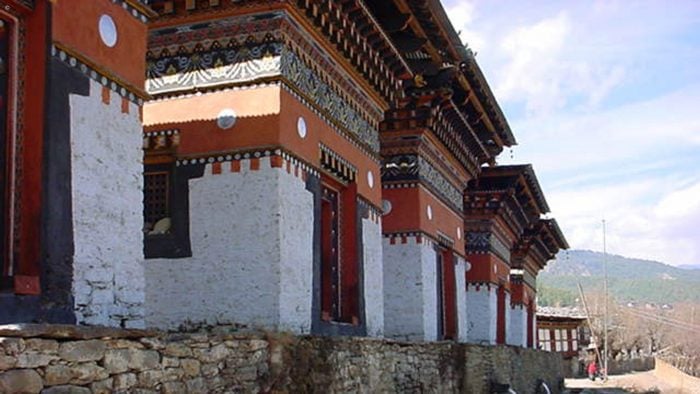
Today, you'll enjoy a guided tour of the old place of Wangdicholing. The palace can be found in Amankora’s backyard as the buildings were built to share the palace courtyards. Built in 1857, the palace served as the principal summer residence of the first and second kings of Bhutan and is now being turned into a museum. To the north of the palace, you'll see five giant water-driven prayer wheels. For those who are interested, we can arrange a very special tea or dinner with some of the courtiers of the Second King who ruled Bhutan from 1926-1952. You'll be accompanied by a guide who can translate.
We will then attend the Jambay Festival, which will be in full swing as the people of Bumthang enjoy the autumn festivities. From a spiritual point of view the festival is all about the teachings of Buddhism, but it has a social importance too. Festivals are important gatherings for locals and farmers who dress in their best attire and use the occasion to arrange marriages. Masked dancers enact the vanquishing of evil spirits in lively performances which are considered important for the well-being of society.
Gangtey
Transfer
Private scenic transfer to Gangtey via Tower of Trongsa
Accommodation in Gangtey
Gangtey
Overview
You’ll find this exclusive lodge set upon a forested knoll near the village of Gangtey in the picturesque Phobjikha Valley. It benefits from the privacy, seclusion and attention that comes from having just eight suites, as well as sweeping views of the broad valley and the 16th-century Gangtey Monastery.
Each suite features an open-plan living and bedroom area with a traditional bukhari – fire burning stove – positioned between the bedroom and the bathroom.
Cosy chairs, sofas and family-style dining tables appoint the lounge which features floor-to-ceiling windows for breath taking views over the valley and surrounding mountains. Spa facilities with private treatment rooms can be found on the lodge’s ground floor.
→ Find out moreGangtey
Overview
The newly built hotel draws on both the unique Bhutanese style of rural architecture and the talents of a top interior designer to compliment the sweeping views of its valley setting.
The intimate, boutique hotel has just 12 exquisitely appointed rooms, each reflecting the kingdom’s rich cultural heritage. Guests will find a mellow fireplace and cosy fabrics in earthen tones warming their rooms, as well as ornate, traditional decorations which deepen the feeling of an authentic Bhutanese experience.
Wall to ceiling valley and mountain views adorn the comfortable lounge and dining area which features plush leather sofas – ideal for sinking into after a day of adventure. With both spectacular surroundings and a designer look, the Gantey Lodge is an inspired choice for a stay in the beautiful Gangte Valley.
→ Find out more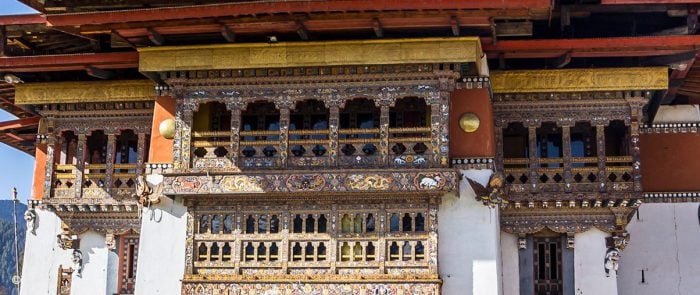
The Gangteng Valley, also known as the Phobjikhii Valley, is a glacial basin populated with an alluring mix of forests. Visit the impressive 17th century Gangteng Goempa - Bhutan's largest Nyingmapa monastery - and its surrounding quaint village. You'll have our list of recommended tours, restaurants and attractions to make sure you make the most of your time here.
Punakha
Transfer
Transfer to Punakha with stops at Wangdue Dzong, Chhimi Lhakhang and Punakha Dzong
Accommodation in Punakha
Punakha
Overview
Wrapped in lush rice fields and fruit orchards by Mo Chhu River, with views to the seventeenth century Punakha Dzong, is a former traditional Bhutanese farmhouse: the Amankora Punakha hotel.
Intimate and exclusive, this stand-out property provides just eight classically designed suites. Each boasts heaps of space and comfort, plus a traditional wood burning ‘bukhari’ stove for a peek into local life.
Dining, pampering and adventure are all well catered for, from the communal dining room, tea pavilion and alfresco courtyard to the two-story spa and meditation room, to exciting white-water-rafting tours.
→ Find out morePunakha
Overview
Nestled deep in the hush of Bhutan’s flourishing wilderness, this heavenly mountain retreat looks out over the rushing Mo Chu River as it winds through orchards and rice fields. Discreetly sleek with its calming, signature COMO style, Uma Punakha enjoys spectacular untouched valley and river views.
Gaze at these sublime panoramas from your hillside room or villa. While some feature private terraces, all boast enormous beds, wood-burning stoves and neutral colour schemes peppered with traditional hand-painted wall designs portraying local scenes.
The restaurant, Bukhari, then offers an array of delicious dishes made from fresh, local farming produce for an authentic taste of local life. Meanwhile the spa promises complete relaxation with holistic, Asian-inspired treatments, therapies and massages.
→ Find out morePunakha
Overview
Located deep in the heart of the verdant Punakha Valley, Dhensa Boutique Resort offers guests a unique combination of contemporary design coupled with architecture comes that’s straight from Bhutan’s ancient past.
Each of the 24 suites – set in six cottages – benefit from private balconies and bathrooms with tubs set against large French with stunning views. Interiors are specious and designed to encapsulate the beauty of simplicity. In the resort’s restaurant guests can choose from a selection of both Western classics and Asian favorites, created from seasonal, local and organic produce.
The spa is uniquely equipped with an outdoor wood-fired bath as well as a steam room and a sauna with a window overlooking the forestry. Treatments use hand-blended oils for the ultimate in revival.
→ Find out more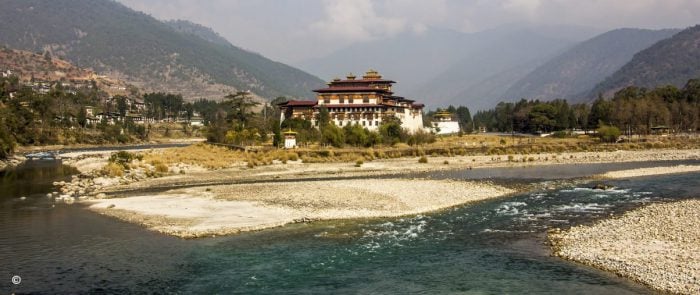
Capital of Bhutan and seat of the government until 1955, the little town of Punakha still enjoys a serene and regal ambience left over from its stately days. Found in a fertile valley at a relatively low 12,000 metres above sea level, visitors come here for warm, sultry days filled with plenty of activities such as mountain biking, trekking and river rafting. Then step into the area's history with a visit to the town's show-stopping Punakha Dzong.
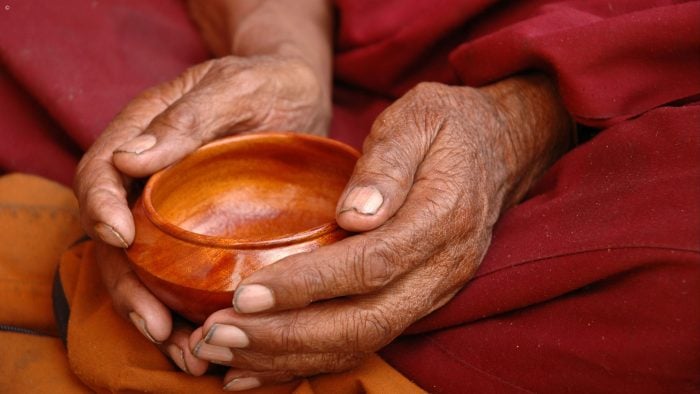
This evening, enjoy tea with nuns at the local Wolokha Nunnery.
Thimphu
Transfer
Private scenic transfer to Thimphu via Lamperi Botanical Garden, Dochhula Pass and Druk Wangyel Temple
Accommodation in Thimphu
Thimphu
Overview
Nestled in a pine forest in Thimphu Valley, this dzong-inspired retreat peacefully looks down to the city from the upper reaches of the Motithang area. Whitewashed stone buildings house slick suites, lounges and spa, while the Amankora service is of course exemplary, with a mood of effortless pampering prevailing throughout.
Sink into your king-sized bed and look out to views of the courtyard, stream or forest from your suite’s window banquette. Then head to the outdoor dining deck for further scenic views and delicious western and Thai cuisine. Plenty of activity is also available from fishing to archery, Bhutan’s national sport, to trekking and white water rafting.
Though the Amankora Thimphu enjoys a quiet location, its proximity to the city promises you are still close to the capital’s sights and shopping, with Paro airport just two hours away.
→ Find out moreThimphu
Overview
Blending Bhutanese Dzong architecture with the highest of modern international standards, Taj Tashi is a grand property in the heart of the Thimphu Valley. Ringed by the Himalayas, its enchanting surrounds are echoed in the hotel’s style with classical hand-drawn Buddhist murals decorating the walls, signature Asian treatments at the spa and many local, elegant touches throughout.
Rooms and suites look out to breath-taking views with some boasting private sit-outs that open out to green mountains rising high above the valley. All of course enjoy the finest amenities, though opt for a suite if you fancy the further luxuries of canopy beds, pillow menus, walk-in closets and stand-alone bathtubs.
The food here is also superb. Don’t miss a chance to savour the fiery flavours at Chig-ja-gye, the hotel’s Bhutanese restaurant, while three more eateries ensure those with a taste for European and Tibetan dishes are catered for too.
→ Find out more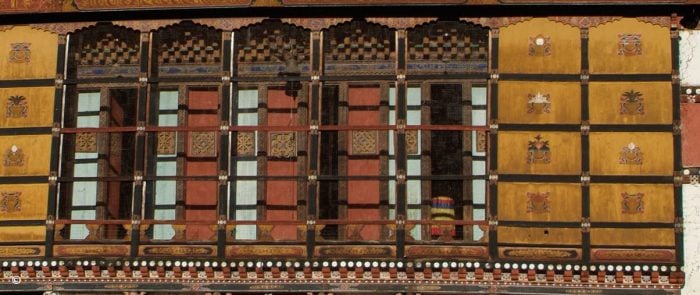
Spend your time in Bhutan's capital exploring the market, Taschichho Dzong and small, chock-a-block shops. A wander around this relaxed and friendly city gives a look at a more urban side of Bhutan which accompanies a wide display of traditional art, architecture and Buddhist sights steeped in ritual. A visit to the Arts and Crafts School, the Textile Museum and the Traditional Medicine Hospital are recommended. Your Travel Designer can help you to plan your stay here according to your interests.
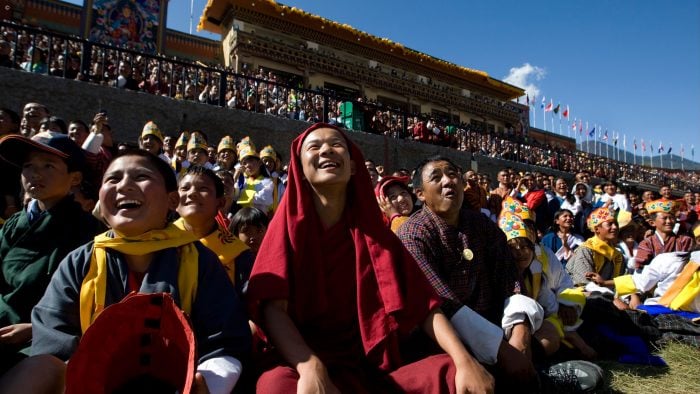
Today, you will be brought to attend the celebrations marking the coronation of His Majesty the King, Jigme Khesar Namgyel Wangchuck, the 5th and current Druk Gyalpo in 2008. Educated in Oxford, Jigme became king after his father stepped down from office and became the world's youngest reigning monarch. His original coronation took place at the Chang-Lime-Thang National Stadium in Thimphu. Held annually, Coronation Day is a public holiday in Bhutan and celebrations to mark it usually last for three days. The festival begins with the offering of a spiritual lamp before the portrait of the King and the singing of the national anthem. Then follows dancing, games and cultural activities performed by monks and laymen in colorful costumes and mask.
Paro
Transfer
Private transfer to Paro with lunch
Accommodation in Paro
Paro
Overview
Situated in Balakha Village, the Amankora Paro contrasts rustic elements with contemporary design. Its pleasing features include natural rammed-earth walls, gently sloping roofs, wood-panelled interiors and spectacular views of blue pine forests, the 17th-century Drukyel Dzong and Mount Jhomolhari.
This impressive lodge features 24 suites, each with a combined lounge and bedroom and traditional wood-burning stove. Centred by a large flagstone courtyard, a lime-washed stone pavilion houses the living and dining room facilities with floor-to-ceiling windows, a library and an outdoor terrace overlooking a small stream.
A spa set on two levels features a yoga studio with glass walls and treatment rooms with outdoor baths.
→ Find out moreParo
Overview
Located on a 38-acre site sitting on a forested mount, Uma Paro was once the home of a Bhutanese nobleman and is a resort of exceptional style and elegance. The building, one of Bhutan’s only boutique hotels, features handcrafted stone, wood and tiles and white walls vividly painted by local artists.
29 suites including private villas can be found amongst glades planted with azaleas, and each suite features a traditional wood-burning stove. The circular dining room offers a unique atmosphere for dinners while a cosy bar and lounge afford complete relaxation.
Spa facilities incorporate a unique hot stone bath house, a large indoor pool with outdoor sun deck and steam rooms. There is also the use of a fitness centre and a boutique to complete your stay.
→ Find out moreParo
Overview
Fusing Bhutanese tradition with the best of modern-day technology, Zhiwa Ling is a forward-thinking hotel faithfully rooted in the past.
Guestrooms blend elaborate hand-carved wooden cornices with Swedish underfloor heating to create a comfortable tribute to Bhutan’s ornate architecture. Some feature sitting and dining rooms and all boast Paro valley views, best enjoyed from your sofa or balcony.
And the amenities don’t stop there. The spa is decked out with a sauna, steam room and traditional outdoor hot stone bath, while two restaurants serve a range of regional and international dishes. The spiritually inclined are particularly well catered for and can experience an authentic Buddhist ceremony at the in-house temple, made from 450 year old timbers from the famous Gangtey Monastery, and practise yoga at the Meditation House.
→ Find out more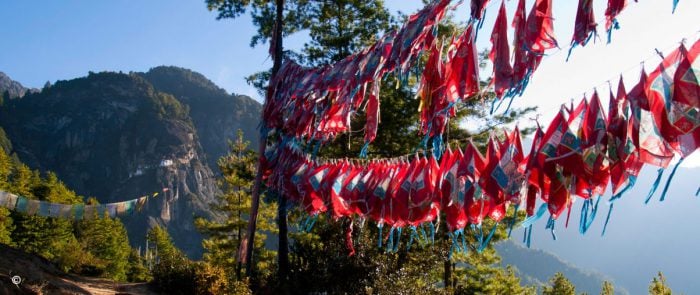
While Bhutan is famous for its splendid monuments and monasteries, perhaps the most impressive can be found here. You'll encounter the "Tiger's Nest" Monastery, medieval style-bridges, imposing dzongs and a town filled with traditional architecture. Facing up the mountain, you'll be awed by the 8th-century Taktsang or "Tiger's Nest" Monastery, perched high on the sheer cliff face. Just outside of the town, lie both the dominating Paro Dzong - a prime example of Bhutanese architecture, and the 7th-century Kyichu Lhakhang which was one of the first Buddhist temples built in the country.
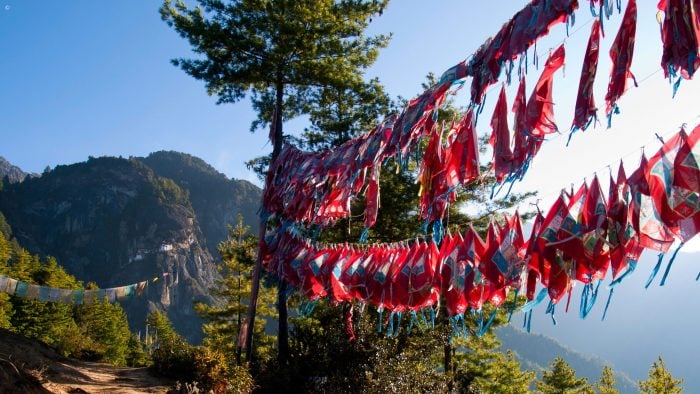
Today you’ll experience Bhutan’s most valued attractions and one of the main reasons people come to Bhutan, the famous Taktshang monastery or "Tiger’s Nest". This spectacular temple clings to a 1,000 foot high cliff and was built in 1692 by a prominent historical figure named Gyaltse Tenzin Rabgye. We hike for about three hours to reach the Tiger's Nest, climbing steeply uphill from the valley floor with a break at a tea house along the way. The Tiger’s Nest is one of the most sacred sites for the Buddhists. It's said that in the 8th century, Guru Padma meditated here for three months. Guru Padma, also known as the 2nd Buddha, first initiated Buddhism to Bhutan in the 8th century. Legend has it that Guru Rinpoche flew to this location from Tibet on the back of a tigress from Khenpajong and built this temple as a result. For Buddhists, the story of the temple is an important lesson about taming the inherent forces of Anger, Ignorance and Greed.
We then hike for approximately two hours back downhill. On your return, treat your weary limbs to an indulgent soak in a hot stone bath.
Transfer
Private transfer to Paro Airport
We design private journeys for people who wish to go beyond the typical and experiencing something truly special. Our amazing team of travel designers, concierges and local guides work together to create unique journeys that get deep under the skin of where you’re visiting.
Get in touch
Festivals, Culture and Beauty: A Luxury Tour through Bhutan
How we work
Experience the ancient living culture of Bhutan with this intrepid festival tour, and we’re certain that you’ll fall in love with the beauty, culture and people of the Land of the Thunder Dragon. We begin and end this tour in Paro, where we discover the town’s architectural charms with impressive fortresses, ancient ruins and the awesome ‘Tiger’s Nest’ monastery, perched high on a cliff face. Next up is Bhutan’s spiritual heartland, Bumthang, where we’ll attend the Jambay Lhakhang Festival. Watch athletic masked dances and colorful celebrations and you’ll experience the vitality of the Bhutanese first hand. We then move on to Gangtey and Punakha where we visit the ‘The Divine Madman Temple’ and have tea at the Wolokha Nunnery. Thimphu, Bhutan‘s capital city, is our next destination. It’s here that we’ll attend the Coronation Day Festival, celebrated with games, singing and performances each year in honour of the 5th King’s coronation. Expect color, movement, atmosphere and excitement. Complete with luxury accommodation and our signature specialized attention throughout, naturally.
| Whats included?
|
Days 1-2 |
Paro |
|
Flights & transfers
Private transfer to Paro hotel |
|
|
Accommodation in Paro
•
Amankora Paro - $$$$$
Situated in Balakha Village, the Amankora Paro contrasts rustic elements with contemporary...
•
Uma Paro - $$$$$
Located on a 38-acre site sitting on a forested mount, Uma Paro was once the home of a
•
Zhiwa Ling Hotel - $$$$$
Fusing Bhutanese tradition with the best of modern-day technology, Zhiwa Ling is a...
|
|
| One day in Paro The pretty valley of Paro with its town of the same name is one of the kingdom's widest and is covered in fertile rice fields crisscrossed by a beautiful meandering river. The main street of the town was only built in 1985 but it's lined with cheerfully painted wooden shop fronts and restaurants in a classic Bhutanese style. |
|
| Half Day Tour of Paro with National Museum, Rinpung Dzong and Drugyal Dzong Today you will enjoy a tour of the town of Paro. Your day begins with a short 30 minute drive in a private vehicle to the National Museum, which lends itself to spectacular bird’s eye views of the main Paro Valley. The museum houses over 3000 pieces of Bhutanese art, covering more than 1,500 years of Bhutan's cultural heritage. It has a formidable collection of antiques from Buddhist temples, and artefacts once used by both the nobility and common folk. Highlights include masks, armour, paintings, prehistoric items and natural history exhibits.
|
|
|
Flights & transfers
Private transfer to Paro Airport |
|
| Flight from Paro to Bumthang | |
Days 2-4 |
Bumthang |
|
Accommodation in Bumthang
•
Amankora Bumthang - $$$$$
With a name derived from the Sanskrit word for peace, you can rest assured that your stay at...
•
Bumthang Mountain Resort - $$$$$
Not only is this mountain resort one of the oldest family-run properties in Bumthang, it is...
|
|
| Three days in Bumthang Spend your days in Bhutan's rural and most historic region, Bumthang, exploring the vast number of ancient temples and sacred sites among the farming lands. Comprised of four mountain valleys, Bumthang means 'beautiful land' and is home to quaint farming villages, an intricate and imposing dzong and two national parks where you can see the Bengal tiger, snow leopard and Himalayan black bear. |
|
| Tour of Temples and Jambay Lhakhang Festival Today, you will be brought to see two of the oldest temples in the kingdom, Jambay Lhakhang and the Kurje Lhakhang. The Jambay Lhakhang temple was built in the 7th century AD by a Tibetan King named Songtsen Gampo. According to legend, he was tasked to build 108 temples in a day to subdue a demoness in the Himalayas. Guru Rimpoche was said to have visited the temple several times and deemed it exceptionally sacred. Chakhar Gyab, the king of the Iron Castle of Bumthang, renovated the temple in the 8th century AD. The main relic of the temple is the statue of the future Buddha, Jowo Jampa, from whose name the present name of the temple is derived. Also housed in the temple is the Kala Chakra ("The Wheel of Time") which was built by the first king of Bhutan, Gongsa Ugyen Wangchuck, to commemorate victory over his rivals in 1885.
|
|
| Tour of Wangdicholing Palace and Jambay Festival Excursion Today, you'll enjoy a guided tour of the old place of Wangdicholing. The palace can be found in Amankora’s backyard as the buildings were built to share the palace courtyards. Built in 1857, the palace served as the principal summer residence of the first and second kings of Bhutan and is now being turned into a museum. To the north of the palace, you'll see five giant water-driven prayer wheels. For those who are interested, we can arrange a very special tea or dinner with some of the courtiers of the Second King who ruled Bhutan from 1926-1952. You'll be accompanied by a guide who can translate.
|
|
Days 4-5 |
Gangtey |
|
Flights & transfers
Private scenic transfer to Gangtey via Tower of Trongsa |
|
|
Accommodation in Gangtey
•
Amankora Gangtey - $$$$$
You’ll find this exclusive lodge set upon a forested knoll near the village of Gangtey...
•
Gangtey Lodge - $$$$$
The newly built hotel draws on both the unique Bhutanese style of rural architecture and the...
|
|
| One day in Gangtey The Gangteng Valley, also known as the Phobjikhii Valley, is a glacial basin populated with an alluring mix of forests. Visit the impressive 17th century Gangteng Goempa - Bhutan's largest Nyingmapa monastery - and its surrounding quaint village. You'll have our list of recommended tours, restaurants and attractions to make sure you make the most of your time here. |
|
Days 5-6 |
Punakha |
|
Flights & transfers
Transfer to Punakha with stops at Wangdue Dzong, Chhimi Lhakhang and Punakha Dzong |
|
|
Accommodation in Punakha
•
Amankora Punakha - $$$$$
Wrapped in lush rice fields and fruit orchards by Mo Chhu River, with views to the seventeenth...
•
Uma Punakha - $$$$$
Nestled deep in the hush of Bhutan’s flourishing wilderness, this heavenly mountain...
•
Dhensa Boutique Resort - $$$$$
Located deep in the heart of the verdant Punakha Valley, Dhensa Boutique Resort offers guests...
|
|
| One day in Punakha Capital of Bhutan and seat of the government until 1955, the little town of Punakha still enjoys a serene and regal ambience left over from its stately days. Found in a fertile valley at a relatively low 12,000 metres above sea level, visitors come here for warm, sultry days filled with plenty of activities such as mountain biking, trekking and river rafting. Then step into the area's history with a visit to the town's show-stopping Punakha Dzong. |
|
| Evening tea at Wolokha Nunnery This evening, enjoy tea with nuns at the local Wolokha Nunnery. |
|
Days 6-8 |
Thimphu |
|
Flights & transfers
Private scenic transfer to Thimphu via Lamperi Botanical Garden, Dochhula Pass and Druk Wangyel Temple |
|
|
Accommodation in Thimphu
•
Amankora Thimphu - $$$$$
Nestled in a pine forest in Thimphu Valley, this dzong-inspired retreat peacefully looks down...
•
Taj Tashi Thimphu - $$$$$
Blending Bhutanese Dzong architecture with the highest of modern international standards, Taj...
|
|
| 2 Days in Thimphu Spend your time in Bhutan's capital exploring the market, Taschichho Dzong and small, chock-a-block shops. A wander around this relaxed and friendly city gives a look at a more urban side of Bhutan which accompanies a wide display of traditional art, architecture and Buddhist sights steeped in ritual. A visit to the Arts and Crafts School, the Textile Museum and the Traditional Medicine Hospital are recommended. Your Travel Designer can help you to plan your stay here according to your interests. |
|
| Coronation Day Festival Today, you will be brought to attend the celebrations marking the coronation of His Majesty the King, Jigme Khesar Namgyel Wangchuck, the 5th and current Druk Gyalpo in 2008. Educated in Oxford, Jigme became king after his father stepped down from office and became the world's youngest reigning monarch. His original coronation took place at the Chang-Lime-Thang National Stadium in Thimphu. Held annually, Coronation Day is a public holiday in Bhutan and celebrations to mark it usually last for three days. The festival begins with the offering of a spiritual lamp before the portrait of the King and the singing of the national anthem. Then follows dancing, games and cultural activities performed by monks and laymen in colorful costumes and mask. |
|
Days 8-10 |
Paro |
|
Flights & transfers
Private transfer to Paro with lunch |
|
|
Accommodation in Paro
•
Amankora Paro - $$$$$
Situated in Balakha Village, the Amankora Paro contrasts rustic elements with contemporary...
•
Uma Paro - $$$$$
Located on a 38-acre site sitting on a forested mount, Uma Paro was once the home of a
•
Zhiwa Ling Hotel - $$$$$
Fusing Bhutanese tradition with the best of modern-day technology, Zhiwa Ling is a...
|
|
| Two days in Paro While Bhutan is famous for its splendid monuments and monasteries, perhaps the most impressive can be found here. You'll encounter the "Tiger's Nest" Monastery, medieval style-bridges, imposing dzongs and a town filled with traditional architecture. Facing up the mountain, you'll be awed by the 8th-century Taktsang or "Tiger's Nest" Monastery, perched high on the sheer cliff face. Just outside of the town, lie both the dominating Paro Dzong - a prime example of Bhutanese architecture, and the 7th-century Kyichu Lhakhang which was one of the first Buddhist temples built in the country. |
|
| Full day tour with hike to Tiger's Nest and a hot stone bath Today you’ll experience Bhutan’s most valued attractions and one of the main reasons people come to Bhutan, the famous Taktshang monastery or "Tiger’s Nest". This spectacular temple clings to a 1,000 foot high cliff and was built in 1692 by a prominent historical figure named Gyaltse Tenzin Rabgye. We hike for about three hours to reach the Tiger's Nest, climbing steeply uphill from the valley floor with a break at a tea house along the way. The Tiger’s Nest is one of the most sacred sites for the Buddhists. It's said that in the 8th century, Guru Padma meditated here for three months. Guru Padma, also known as the 2nd Buddha, first initiated Buddhism to Bhutan in the 8th century. Legend has it that Guru Rinpoche flew to this location from Tibet on the back of a tigress from Khenpajong and built this temple as a result. For Buddhists, the story of the temple is an important lesson about taming the inherent forces of Anger, Ignorance and Greed.
|
|
|
Flights & transfers
Private transfer to Paro Airport |




































